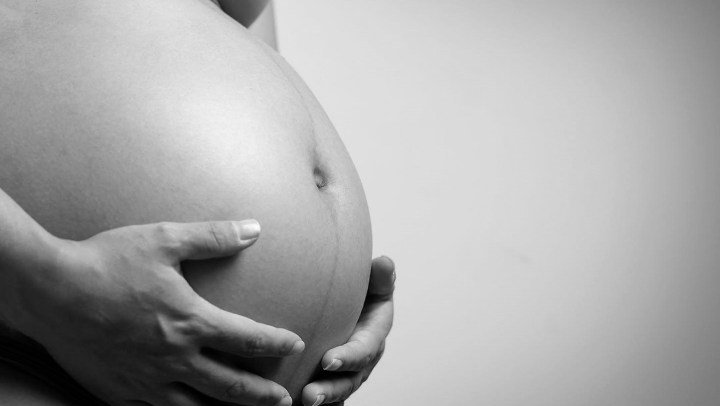WORKPLACE RIGHTS OP-ED
SA’s fragmented maternity protection landscape: Why benefits should be available to all working women

Researchers from the University of the Western Cape have identified 24 national policy documents — from various government departments — that address the different components of maternity protection, making it difficult for everyone (especially women and employers) to know what can and should be provided around the time when a woman has a baby.
Comprehensive maternity protection refers to a set of benefits that should be available to all pregnant or breastfeeding working women.
According to the International Labour Organization (ILO), comprehensive maternity protection includes health protection at the workplace, maternity leave, cash and medical benefits during maternity leave, non-discrimination, employment protection (job security), breastfeeding or expressing breaks, and access to childcare.
Often, when “maternity benefits” are spoken about, maternity leave and whether or not a woman is paid while on maternity leave are the only considerations. Although this is important, all components of maternity protection are needed for working women to be supported, especially for women to reach their breastfeeding goals.
A woman should not have to choose between work and raising a child; there should be structures in place (through government legislation, company policies and societal support) to enable a woman to continue to work after having children, if that is what she wants or needs to do.
Similarly, a woman should not feel that breastfeeding needs to stop when she returns to work.
However, there are many stories of women who try to combine these competing priorities but experience many challenges along the way.
Fragmentation
In South Africa, we have a progressive Constitution and Bill of Rights, and many policies that refer to different components of maternity protection.
However, researchers from the University of the Western Cape have recently described how maternity protection in South Africa is fragmented, and components of maternity protection are located in many different policy documents.
This makes it difficult for everyone (especially women and employers) to know what protection can and should be provided around the time when a woman has a baby.
This fragmentation also makes it difficult for the existing laws and policies to be monitored and enforced. In a policy analysis paper, recently published in the Journal of Human Lactation, we identified 24 national policy documents from various government departments, incorporating the different components of maternity protection. We described how this process of documenting where maternity protection is located in South African policy was time-consuming and laborious.
The authors started writing this article two years ago, but the groundwork was laid when Pereira-Kotze started her PhD studies in 2018. If researchers dedicated to this topic found it difficult to navigate the maternity protection benefits landscape, how are women expected to do so, while also working and pregnant or breastfeeding?
Recommendations
The policy analysis paper provides a comprehensive, accessible resource document that maps out the current maternity protection policy landscape in South Africa — for employer and employee alike.
It demonstrates that although many of the global recommendations on maternity protection are incorporated into national legislation in South Africa, it is a glaring omission that breastfeeding or expressing breaks are not legislated but rather recommended in the Code of Good Practice on the Protection of Employees During Pregnancy and After the Birth of the Child, 1998 of the Basic Conditions of Employment Act and other guideline documents.
It should, however, be remembered that national legislation provides minimum recommendations for companies, organisations and institutions to implement. All employers should be encouraged to abide by the latest international best practices and do all they can to fulfil their responsibilities to support working women to breastfeed.
There are some companies in South Africa that give paid maternity leave that is longer than the minimum, as recommended in our country’s law. Many organisations and public spaces have launched breastfeeding rooms, so that mothers have a private place to breastfeed their baby or express their milk.
The National Department of Health has a useful guide for employers and employees, Supporting breastfeeding in the workplace.
Also, it is often women working in the formal sector in positions of full-time employment that can access maternity protection benefits. We need to provide equal support to those employed in non-standard relationships, that is, in the informal economy or in part-time or contract positions.
All working women should have the same access to comprehensive maternity protection.
Economic cost
Researchers at the Australian National University and Alive & Thrive in Southeast Asia have recently published a Mothers’ Milk Tool, which quantifies the value of breastfeeding at national and global levels, and also calculates how much is lost in economic terms if country policies or healthcare, work and community settings do not enable women and children’s rights to breastfeeding.
It cannot only be a woman or a mother’s responsibility to improve breastfeeding practices. Everyone has a role to play, including men and fathers.
There has been work done to progress paternity and parental leave in South Africa; however, these changes may be insufficient to contribute to gender equality without improved maternity protection and shared caregiving responsibility.
There is still much to be done to ensure that women can access all components of comprehensive maternity protection, thereby supporting optimal breastfeeding, which in turn leads to improved nutrition and health for many infants, young children, women, and society as a whole.
It is our hope that with South Africa’s maternity protection policy landscape now mapped, the process towards greater policy coherence, comprehensive guidance on related rights and benefits, and addressing existing gaps, can begin. DM/MC
Catherine (Katie) Pereira-Kotze is completing her PhD in Public Health through the University of the Western Cape. She has been working in the field of public health nutrition for 17 years, with a keen interest in the protection, promotion and support for optimal infant and young child nutrition. She has received funding for her PhD from the DSI-NRF Centre of Excellence for Food Security. Carla Bernardo is the communication and engagement manager at the DSI-NRF Centre of Excellence in Food Security.




















 Become an Insider
Become an Insider
Comments - Please login in order to comment.